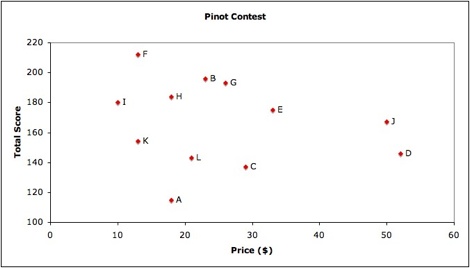A friend of mine is shopping for a mortgage right now, and I just had a very
frustrating conversation with her mortgage broker. What I’d like to do is be
able to choose between a fixed-rate mortgage and an adjustable-rate mortgage.
If I take the adjustable-rate mortgage, I expect to pay a lower interest rate
in return for taking on interest-rate risk. But it seems that the only ARMs
on offer are all "teaser rate" products, where the mortgage resets
to a significantly higher spread once the initial teaser period is over. And
even the teaser rates, on closer examination, don’t look particularly attractive
compared to the fixed-rate mortgage on offer.
The broker offered three ARMs to my friend: a 7/1 ARM at 6%, a 5/1 ARM at 5.875%,
and (after I asked about it specifically) a 1/1 ARM at 5.75%. All three of them,
he said, reset to 225bp over one-year Libor at the end of the initial period.
The reason I asked about the 1/1 ARM, of course, was to get an idea of what
happens to the spread over Libor. At the moment, 1-year Libor is 4.47%, which
means that the 1/1 ARM starts off for the first year at 128bp over Libor, and
then jumps all the way up to 225bp over thereafter. If one-year interest rates
stay where they are, that means my friend will be paying interest of 6.72%.
Even the 30-year fixed-rate mortgage is much lower than that: just 6.125%. And
of course my friend would be paying well over 7% once one-year rates go above
4.75%, which is entirely possible.
The broker was quite clear that you should never buy an adjustable-rate mortgage
with an intial rate any longer than the amount of time you intend to own your
home. If you’re going to sell within five years, then get the 5/1 ARM: it’s
cheap money. But if you’re intending to stay in your house and pay off the mortgage
over time, then don’t even think about it: you’ll be killed once that adjustable
rate of 225bp over Libor kicks in.
Libor doesn’t go out beyond one year, but Treasury rates do; the one-year Treasury
trades today at 3.49%. So let’s look at spreads over Treasuries
as opposed to spreads over Libor: that way we can compare all the options on
a like-for-like basis. And let’s assume that 225bp over one-year Libor is the
same as 323bp over Treasuries.
| Product |
Initial spread |
Spread after reset |
| 1/1 ARM |
226bp |
323bp |
| 5/1 ARM |
216.5bp |
323bp |
| 7/1 ARM |
210bp |
323bp |
| 30yr fixed |
158.5bp |
N/A |
This is just incredibly counterintuitive to me: the spread curve on mortgages
seems to be pretty steeply inverted. The more-floating and less-fixed the mortgage,
the higher the spread is – even before you take into account the seemingly-penal
interest rate once the initial period is over. Are these numbers remotely similar
to the ones that Alan Greenspan looked at when he famously said that adjustable-rate
mortgages made more sense than fixed-rate mortgages? How can it make sense for
adjustable-rate mortgages to reset to 323bp over Treasuries, while a 30-year
fixed-rate mortgage for the same borrower is quoted at 158.5bp over Treasuries?
Indeed, looking at this table, even the initial rates offered on the ARMs look
pretty underwhelming: they’re "teaser rates" only in comparison to
the really high rate charged after they reset. If anybody can provide
an explanation of what’s going on here, I would be extremely grateful, because
I can’t make heads nor tails of it. Why is it that a borrower pays more when
the borrower is taking interest-rate risk than when the lender takes interest-rate
risk?
Update: The fixed interest rate on a 15-year fixed
rate mortgage is 5.875% – the same as the teaser rate on the 5/1 ARM.


